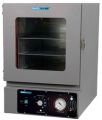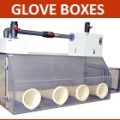Ultimate guide for Laboratory Refregerator Freezer
Many laboratories utilize fridges and freezers used by consumers to store chemicals and other samples. There are a variety of situations where an appliance specifically designed for use in labs is essential. For example that flammable materials like solvents could ignite if the kitchen-designed refrigerator or freezer produces a spark when it is switched on.
Laboratory refrigerator freezer is designed with technological and design elements that aid in the lab. For instance, manual defrosting lets the user control freezing burn, dehydration and improper freezing.
What's the Difference Between Home and Lab Refrigerators and Freezers?
The laboratory refrigerators and freezers are constructed and designed to meet stricter requirements than those typically found in-home or commercial equipment. The plasma, blood, and pharmaceuticals, for instance, need to be kept in tight temperature limits to avoid the loss of potency or degradation.
The proper storage of these and other temperature-sensitive products is strictly governed by organizations such as the Food and Drug Administration and agencies such as the Centers for Disease Control and Prevention. Unsafe storage of vaccines, for instance, causes losing their potency and is an enormous cost both in loss of product and the price of re-vaccinating.
The preservation of valuable or irreplaceable biological specimens is another instance in which temperature management is crucial.
The expense (and possible penalties) associated with inadequate storage in laboratory refrigerators and freezers can be a strong argument for their cost.
It is the reason the control of temperature and record-keeping daily is crucial.
Specification Guidelines for Laboratory Refrigerators along with Freezer.
The majority of the time, your home refrigerator has an inside dial with a range of temperature settings which range from the coldest to warmest to off. It's not accurate enough for many labs and health establishments.
Laboratory refrigerators generally operate from 20C to 100C, and freezers range from -100C to -2250C; however, some variations are based on the models. Low-temperature freezers, also based on models, are offered with temperatures of 250C 300, -300, and -400C. Ultra-low temperature freezers are configured from -500 up to -860C.
A suggestion: When purchasing a laboratory freezer, choose one that can provide the temperature you require, as the lower the temperature, the more power it will need. The most popular is the advanced digital LED display temperature controllers with microprocessors.
The top models like those in the Nor-Lake Select series use the more precise and precise logic controls that can be programmed and are the most effective option to ensure minimal temperature fluctuations. The top models can also set temperatures up to one decimal point.
The majority of lab equipment today is designed to show internal temperatures without leaving the unit. It means that lab technicians do not have shut the door to monitor and record the temperature.
Original Source: https://theomnibuzz.com/ultimate-guide-for-laboratory-refregerator-freezer/
Other articles and publications:
Articles and publications of other companies:
- +1 (714) 754-6660
- 2106 N Glassell St, Orange, CA, 92865, USA
- www.globallabsupply.com/Chairs-Stools-s/1825.htm







